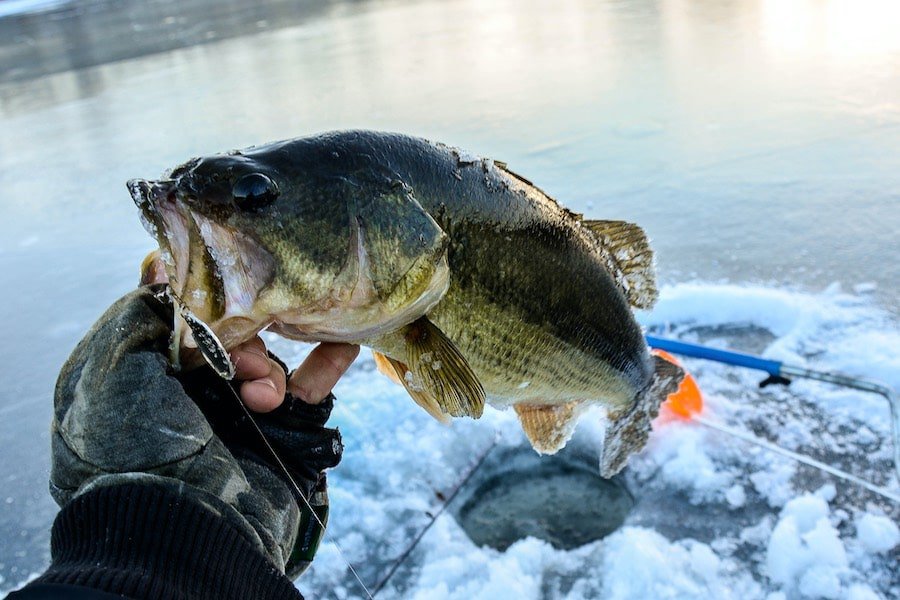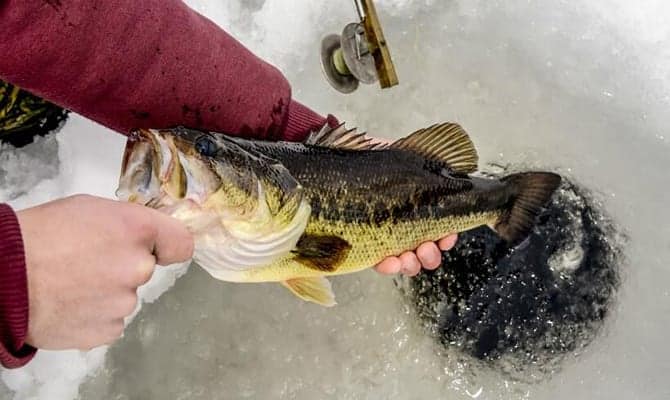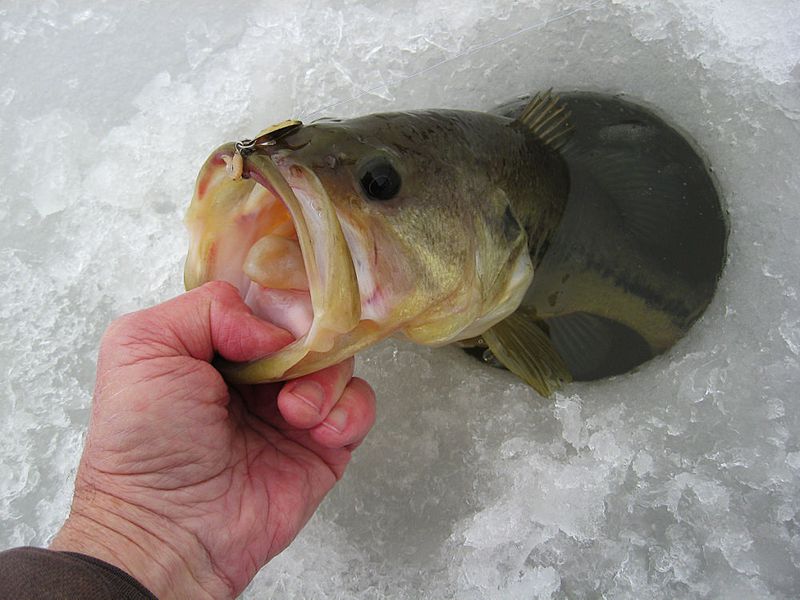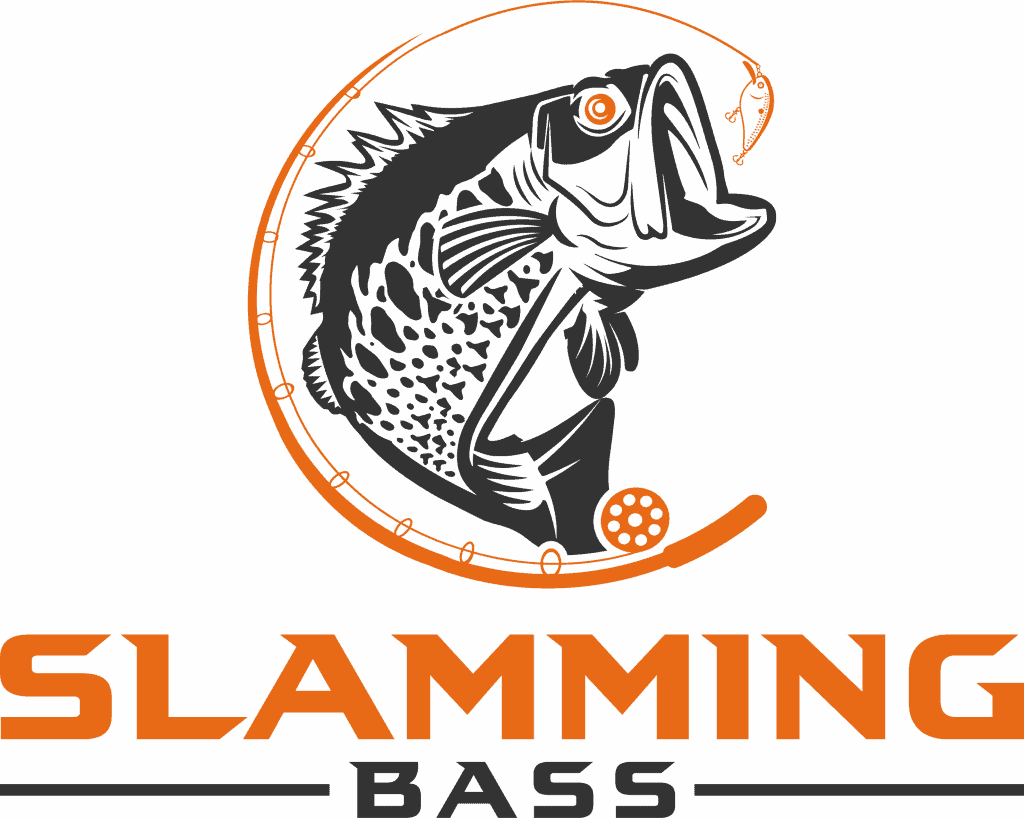8 Tips Ice Fishing For Bass
Contrary to popular lore, smallmouth and largemouth bass do bite under the ice. But we have to adjust our tactics in response to the wintery conditions. The fish congregate on the bottom and are lethargic and slow. They only eat a small fraction of what they would normally eat in the summer. But here’s the thing: they do need to feed and can therefore be caught. Below are some ways to catch more bass under the ice.

Choose The Right Depth: Fish Deep
A proven early-winter tactic on small bodies of water with depths less than about 40 ft is to fish over the deepest part of the pond or lake. The bass will school in those areas because the water is – relatively speaking – the warmest down there. The reason is that water at around 39°F is densest and therefore sinks to the bottom, whereas the colder – but less dense water – water remains on top.
Bass Don't Move Much In Cold Water
A school of bass under the ice will stay put in the same general area for long periods in the winter. Hence, if bass are caught in one area, chances are that they will be there (or close-by) the next time around. It is a good strategy to icefish a spot that produced bass in the recent past.

Put The Baitfish Right Off The Bottom
Place a live minnow no more than 2-3 ft off the bottom. The sluggish bass sit on the bottom and don’t want to spend any effort chasing their next meal. The best approach is to put the food right in front of their noses!
Set The Hook Fast
A bass under the ice will not swim far after catching its meal. Instead, the fish drops back down to the bottom and plays with its food. So, run to a flag as fast as possible to set the hook. The bass has already spit out the bait if the spool does not turn when you reach the tip-up. You now have three options: (a) reset the flag without bringing up the line and hope that the bait is still attached to the hook and swimming; (b) remove the tip-up and jig the hole; or (c) bring up the line, re-bait, and place the minnow 4-5 ft of the bottom. This last tactic buys a few extra seconds to reach a flag in time to set the hook if the bass decides to feed again.
The Earlier The Better
This advice is true for all ice fishing: get on the ice at the crack-o-dawn because fish in the winter feed early in the morning and then become lock-jawed until later in the afternoon. The best chances of hooking bass are within two or three hours after sun rise. Catch rates drop quickly after that.

Slow Down Your Presentation: Jig Slowly
Don’t forget to jig the bottom for winter bass, but do it slooowly. Again, the fish are sluggish and don’t want to chase a fast-moving lure. Use a “tube bait” or a small airplane jig or Swedish pimple and slowly twitch it up and down a foot or two above the bottom. Don’t be shy to bump the lure on the bottom and let it sit there for a few seconds. The bite is always subtle: the bass will gulp in the lure and just sit there, which feels like “weight” at the other end. Quickly set the hook.
Ice Fishing For Bass: Means Move Tip-Ups Frequently
This strategy is very important with winter bass. Move non-productive tip-ups and place them around an active “honey hole”. That hole is producing flags because it sits above a school of bass! Drill new holes within 15 ft of the honey hole and move tip-ups accordingly. Then drill more holes 15 ft farther out and jig them. Pay attention to flags and jig bites. Do they occur mostly over here or over there? These signals tell you how the school below is oriented. Keep jigging and moving tip-ups until the bite gets consistent.
Find Ledges & Drop Offs
Know thy lake in late winter. Starting in early- to mid-March, bass schools congregate at the bottom of drop-offs that lead to spawning beds further up in the shallows. I use this pattern, which is consistent from year to year, to plan my late-winter bass trips. Set tip-ups over the drop off in 20-40 ft of water. Place your bait 2-3 ft off the bottom and watch for flags. They will signal where the bass school is located. Move your tip-ups as explained in the previous paragraph and have a glorious late-winter day on the ice catching lots of large, fat, pre-spawn bass!
Don’t Be Afraid To Mix It Up
Don’t be afraid to think outside of the box while ice fishing for bass. If the tactics described above don’t work, because bass can and do have a mind of their own for reasons only they know… I’ve caught bass in 3 ft of water while ice fishing for brook trout along a rocky shore line, or 5 ft under the ice in 30 ft of water while targeting splake or brown trout. The bottom line is to stay flexible and try something else or unusual if the regular approach doesn’t yield the expected results. Remember that the prize goes to the bold!

